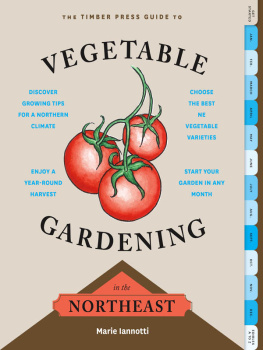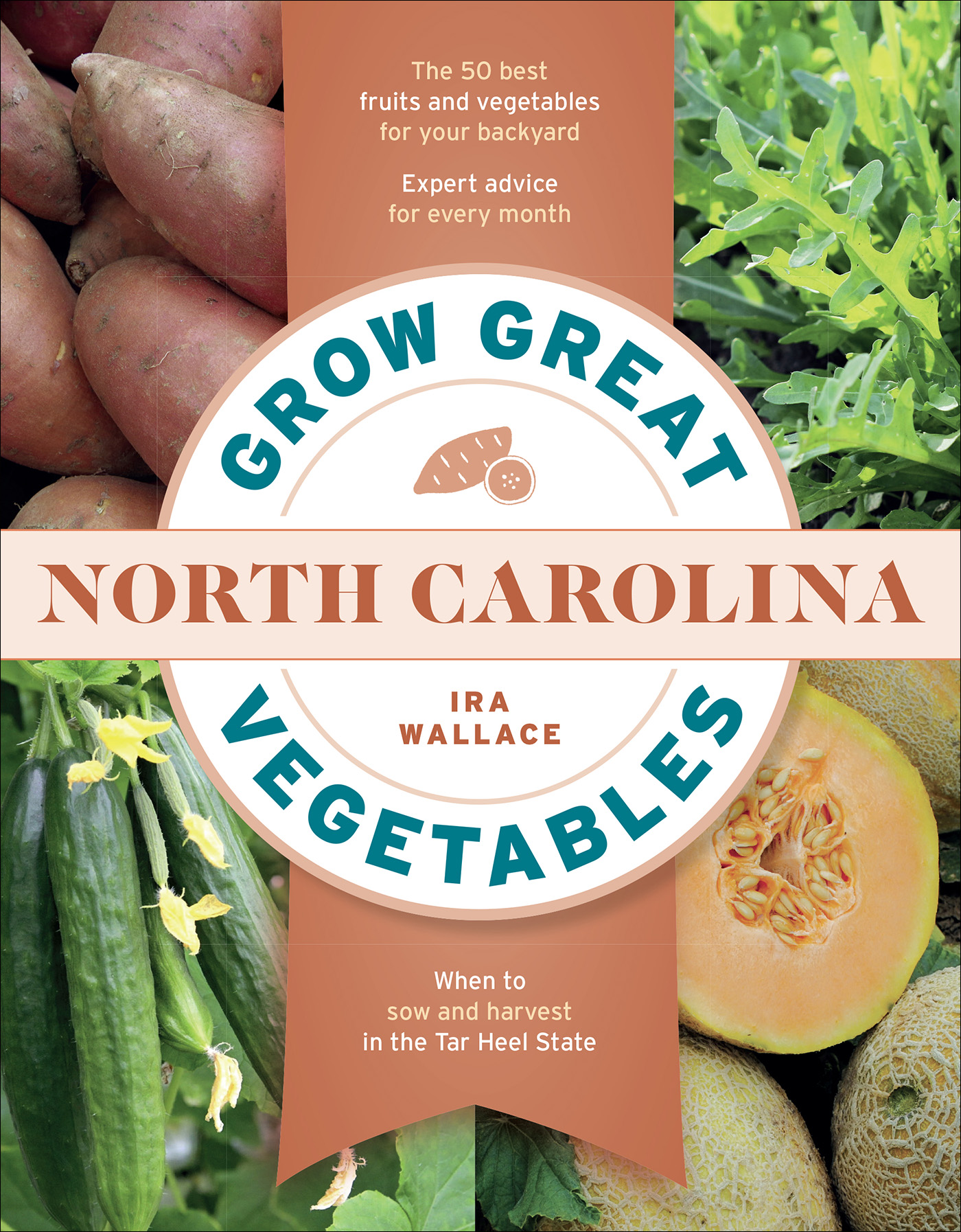Few things are more rewarding than harvesting homegrown vegetables from ones own garden.
GROW GREAT VEGETABLES IN
North Carolina
Ira Wallace
TIMBER PRESS
Portland, Oregon

To my grandmother Estella and my daughter Raphael, who both loved eating fresh from the garden every day.
CONTENTS

ACKNOWLEDGMENTS
I have been giving talks on gardening, writing articles, and contributing to the Southern Exposure Seed Exchange catalog for many years. But it took surviving a life-threatening operation for me to finally agree to write an actual book. For this second foray it was Timber Press again who got me to consider offering specific advice for North Carolina gardeners. This volume would not be possible without the help and support of the team at Timber Press, as well as the generously shared knowledge from our many knowledgeable agricultural extension agents, organic farmers, and gardeners throughout North Carolina.
Thanks also to my gardening friends Pam Dawling, Cindy Conner, and Ken Bezilla, who shared their experience and their years of gardening records, and answered so many of my questions along the way.
I am especially grateful to Lisa Dermer, organizer par excellence, and Gordon Sproule, who both worked with me from the beginning, helping whenever I askedediting and offering insightful suggestions and personal encouragement whenever I needed them.
Thank you to all my friends and fellow worker/owners at Southern Exposure Seed Exchange and Acorn Community Farm for supporting me in writing this book by taking on a lot of my usual work in our gardens and in the office.

PREFACE
Vine-ripened tomatoes, succulent figs, crisp winter salads, corn on the cob, and sweet braised greens are just a few of the fresh-from-the-garden delights awaiting gardeners in North Carolina. Working with long, hot summers and mild, uneven winters, southern gardeners from Thomas Jefferson to Barbara Kingsolver have feasted abundantly in every season. Every year at the Heritage Harvest Festival at Monticello, a celebration of heirloom varieties, local food, and sustainable agriculture at Jeffersons mountaintop home, I have the privilege of meeting hundreds of eager gardeners. The bountiful harvest on display at the festival is an inspiration to new gardeners. With a little planning and knowing how to make the right choices for a southeastern garden, even beginning gardeners can have that abundance throughout the year.
I often run workshops on year-round gardening and growing garlic and perennial onions at the Monticello and Mother Earth News fairs, and afterward, eager participants frequently ask if I have a new book. This is my newest offering, a more localized book, sharing what I have learned about year-round food growing in over 40 years as an organic gardener and over 20 years as an advocate and producer of heirloom organic seeds at Southern Exposure Seed Exchange ( SESE ). Our motto at SESE is Saving the past for the future; we strive to preserve the knowledge that lets farmers enjoy abundant harvests without chemical fertilizers and pesticides. Our farm is certified organic and I am committed to keeping our spot of earth healthy and productive. Throughout this book, I have shared the information youll need to make your own garden equally rich.
My gardening roots trace back to my grandmothers backyard in Florida, where I grew up. We had something growing every month, although all I remember growing in late summer were black-eyed peas, okra, and sweet potatoes. That was the slow time, but it didnt last long. As soon as the weather started cooling off a little, we went all-out with greens, squash, peppers, tomatoes, and beans. Winter brought on lettuce, celery, and even more greens. I dont think I grew broccoli and other, more refined members of the cabbage family until after I went off to college. But, boy, did we have some fine cabbages, collards, turnips, and mustards. These memories make fall and winter gardening special for me. Fall harvests provide fresh organic food just when it is most expensive in the markets and less available from local farms. And growing a fall garden is actually easier than summer gardening, once you get the timing down. In the chapters, Ill go through the basics of summer planting for an abundant fall and winter harvest. I share the techniques and timing that work for us to start seeds in the heat.
In these hectic, modern times, many of you might feel that it is hard to find the time you need to produce your own food. Well, let me tell you that I struggle with having enough time myself. Its one reason that I am always looking for new wayslike creating no-dig lasagna bedsto make gardening easier. Gardening is still a lot of fun for me. I always make time to try out something new in the garden each year. This is how I find new and exotic tastes like Thai Red roselle for jams and refreshing drinks or delicious new-to-me heirlooms like Shronces Deep Black peanut. I have tried to share many of my favorite heirloom varieties for those of you who want to be able to save seeds as well as enjoy fine flavors. I have included basic seed-saving instructions for each of the vegetables in the section.
There are almost as many reasons for gardening as there are gardeners. But whatever the reasons, in the last five years we have seen the number of new gardeners buying our seeds increase by 10 to 20 percent every year and the attendance at the Heritage Harvest Festival at Monticello has quadrupled. The question of what is going into our food and where it comes from has led many of us toward local and organic food, and that excitement is only growing. And what food is more local than the food from your own backyard? Whether you are new to gardening or an old hand looking for tips, I hope this book will give you the tools and motivation you need to get gardening straight away.
Get Started


A backyard vegetable garden in Chapel Hill locates plantings with colorful homemade markers.

This rural North Carolina garden produces a bounty of corn and beans.
WELCOME TO GARDENING IN
North Carolina
North Carolina is a lovely river-riddled state with a varied gardening history starting before the arrival of European settlers, with the Hatteras tribe of the coastal areas, the Cherokee in the mountainous regions, and three groups (the Catawba, Chowanog, and Tuscarora) in the Piedmont to the coast. The gardens at Old Salem recreate and teach about the gardening practices of the very successful Moravian settlers who left detailed records. Perhaps due to the rivers and mountains, small self-sufficient farms were the most common type of farm in North Carolina well into the twentieth century. The geography is varied from the barrier islands, sandy soils, and pine barrens along the coast through the richer soils and rolling hills of the Piedmont, to the rugged and majestic mountains where fall is a glorious blaze of color.










